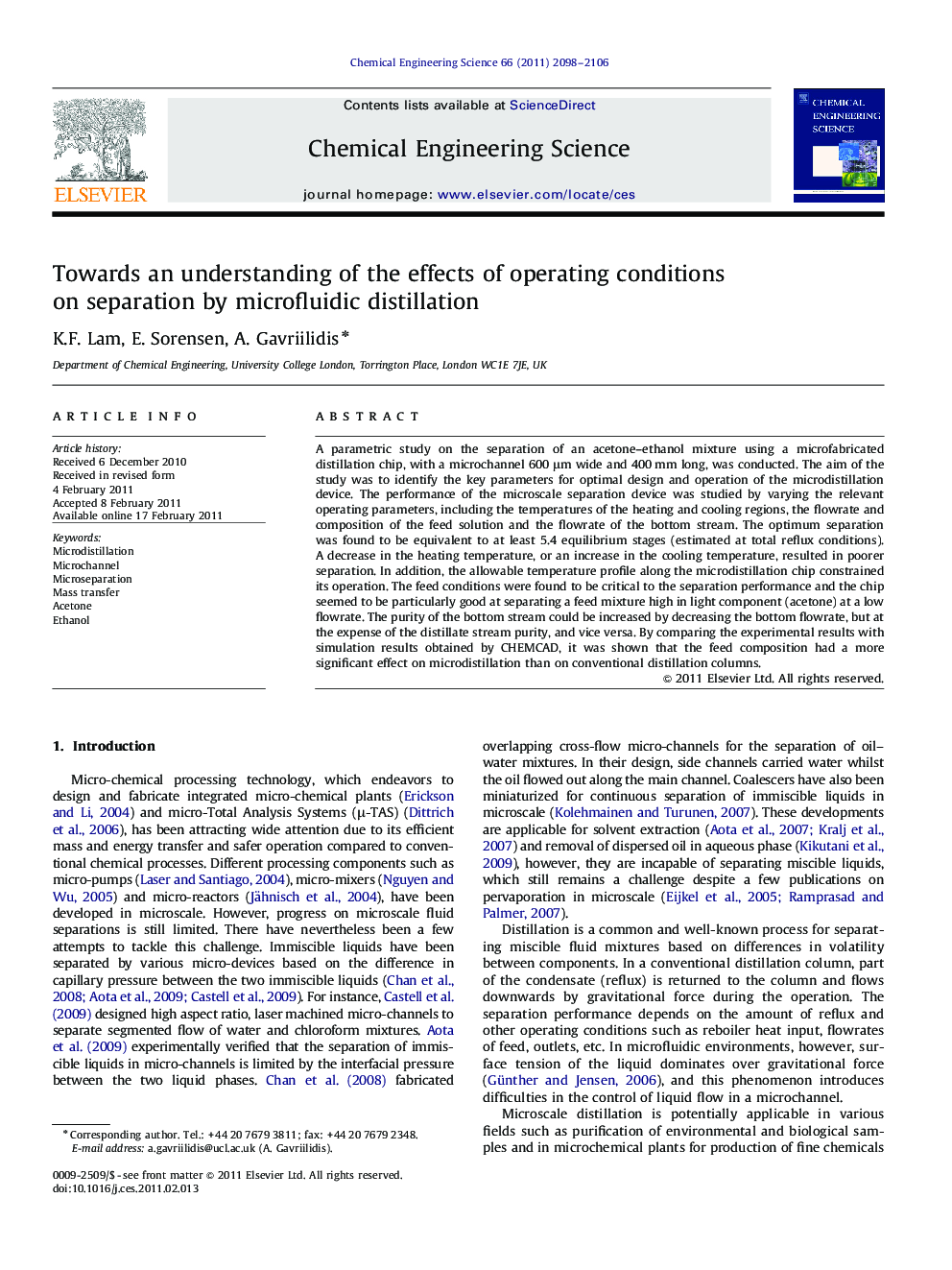| Article ID | Journal | Published Year | Pages | File Type |
|---|---|---|---|---|
| 156730 | Chemical Engineering Science | 2011 | 9 Pages |
A parametric study on the separation of an acetone–ethanol mixture using a microfabricated distillation chip, with a microchannel 600 μm wide and 400 mm long, was conducted. The aim of the study was to identify the key parameters for optimal design and operation of the microdistillation device. The performance of the microscale separation device was studied by varying the relevant operating parameters, including the temperatures of the heating and cooling regions, the flowrate and composition of the feed solution and the flowrate of the bottom stream. The optimum separation was found to be equivalent to at least 5.4 equilibrium stages (estimated at total reflux conditions). A decrease in the heating temperature, or an increase in the cooling temperature, resulted in poorer separation. In addition, the allowable temperature profile along the microdistillation chip constrained its operation. The feed conditions were found to be critical to the separation performance and the chip seemed to be particularly good at separating a feed mixture high in light component (acetone) at a low flowrate. The purity of the bottom stream could be increased by decreasing the bottom flowrate, but at the expense of the distillate stream purity, and vice versa. By comparing the experimental results with simulation results obtained by CHEMCAD, it was shown that the feed composition had a more significant effect on microdistillation than on conventional distillation columns.
